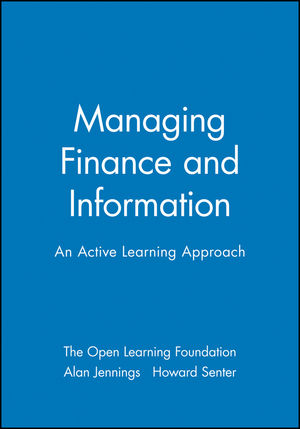Managing Finance and Information: An Active Learning ApproachISBN: 978-0-631-19668-6
Paperback
482 pages
January 1996, Wiley-Blackwell
 This is a Print-on-Demand title. It will be printed specifically to fill your order. Please allow an additional 10-15 days delivery time. The book is not returnable.
|
||||||
Section One: Managing Finance:.
Session one:.
Types of business organisation.
Unincorporated businesses.
Incorporated businesses.
Company growth and the structure of groups.
Other business organisations.
Session two:.
Sources and types of finance.
External providers of finance.
Overdrafts, bills of exchange, creditors and factoring.
Hire purchase, credit sales and finance leases.
Bank loans, mortgages and debentures.
Share capital.
Session three:.
Published accounts.
Published accounts requirements.
Profit and loss account theory.
Profit and loss account format.
Balance sheet theory.
Balance sheet format.
Cash flow statement theory.
Cash flow statement format.
Session four:.
Analysis and evaluation.
Users of accounting information.
Methods of analysis.
Profitability.
Solvency and liquidity.
Capital gearing.
Investment ratios.
Control of working capital.
Session five:.
Analysis of costs.
Ascertaining costs.
Direct and indirect costs.
Functional analysis of costs.
Behavioural analysis of costs.
Absorption costing and marginal costing.
Marginal cost applications.
Break-even analysis.
Session six:.
Budgetary control.
The nature and purpose of budgeting.
Application of budgetary control.
Flexible budgets.
Cash budgets.
Session seven:.
Capital investment appraisal.
Capital expenditure.
Payback methods.
Accounting rate return.
Net present value and yield.
Interest rates, weighted average cost of capital.
Section Two: Managing Information:.
Session one:.
Why organisations need information.
The information age.
Information and decision making.
What kind of information is useful?.
Hard and soft information.
Different functions, different needs.
Session two:.
From data to information.
What do we mean by data?.
What do we mean by information?.
Computers and information management.
Processing data into information.
Information technology.
Methods of data capture.
Information overload.
Session three:.
Meeting an organizations information needs.
The bulging in-tray.
Information management in organisations.
Management information systems.
Decision support systems.
Personal information systems.
Information flows.
Session four:.
Using information technology.
Databases.
Spreadsheets.
Acquiring data.
Presenting information effectively.
Session five:.
Quality and reliability.
How reliable is the data?.
Hardware and software problems.
How information can mislead.
Evaluating forecasts.
Errors of analysis.
Evaluating written reports.



